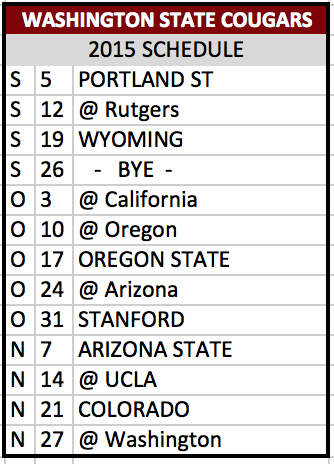|
Mike Bellotti built it, Chip Kelly elevated it, and now Mark Helfrich is maintaining this powerhouse program. Oregon leads the nation in wins since 2010 with a total record of 60-8 over that span. That 5-year window is bookended by National Championship appearances in which the Ducks couldn’t secure the ultimate prize. However, Marcus Mariota helped the program check off a major box by bringing home the first Heisman Trophy to Eugene. His departure leaves quite the void for Helfrich, as Oregon attempts to defend the conference title and finally win the school’s elusive first national title. There will always be critics until that last accomplishment has been fulfilled, but it really is hard to find faults in this program’s recent dominance. Fans nationwide love to throw the oft used “overrated” slur at Oregon; they couldn’t be further from the truth. In addition to their top spot in the overall national win standings since 2010, Oregon has finished the last 8 seasons with winning records against the spread. This means that they continue to outperform the weekly expectations set by Vegas and the betting public. For context, the next closest streak of ATS winning seasons is 4 seasons (Baylor and Kansas State). So let’s cool it with the overrated labels until Oregon is dethroned.
That said, questions remain on both sides of the ball, and the power appears to have shifted from the North Division to the South, despite winning every Pac-12 title game since expansion.
Every season since Jim Harbaugh’s departure in 2010 the preseason narrative has been the same: “yeah, Stanford was solid last year, but how will they ever replace [insert star player here].” First it was the departure of Heisman-finalist Toby Gerhart in 2009, then coach Harbaugh after 2010, then QB Andrew Luck went pro after 2011, then all-time school rushing leader Stepfan Taylor left The Farm after 2012. The steady constant, besides a key star leaving every year, has been that Stanford has silenced critics each time. They control the line of scrimmage living by the old-school mantra “run the ball, stop the run” and in the process, made 4 straight BCS bowls from 2010-2013 and defeated the favored Oregon Ducks in the North Division title game in ’12 and ’13. Well, it took this long for even a small regression from their unprecedented level of sustained success. Stanford suffered 5 losses last season, 3 by a field goal, and surrendered the division and league crowns to Oregon. Statistically, it was actually the best defense over this span (16.4 points per game allowed per game). But the offense was one-dimensional and stagnant behind a youthful, albeit talented offensive line.
Was the 8-5 campaign finally the crash of Stanford, the start of its return to normal program standards? Absolutely not. View it as more of a blip on the radar, as this team remains stacked with talent, and is guided by David Shaw (42-12 in 4 seasons) who has demonstrated his ability annually. The Cardinal very much remains in the North Division race. The fact that 8-5 was considered a disappointment says a lot about the program’s recent rise and elevated expectations.
Jeff Tedford opened his tenure to the tune of 8 straight winning seasons from 2002-2009; this struggling program had just 8 winning seasons in the 27 years prior. His turnaround brought Cal Football to new heights with a pair of 10-win seasons and had them a botched poll vote away from a Rose Bowl bid in 2004. It was a case of raising expectations and then failing to match his own new standards. Despite the highpoints in the mid-2000s, the tenure was becoming stale at the end, and the cupboard was completely empty for Sonny Dykes, who took over in 2013 after 3 years as Louisiana Tech’s headman. Dykes is a disciple of the Mike Leach/Hal Mumme school of thought, and their wide-open, pass-happy offensive philosophy. After a 1-11 transition year, his 2nd Cal team resembled some of those great Leach teams, at least statistically. And since Day 1 here, Dykes has echoed that “the third year is the year.” Cal finally has consistency in the coaching staff and playbook, meaning the team can stop worrying and can simply “go play.” Will Dykes’ 3rd year mantra be fulfilled? They certainly have the offensive firepower and elite signal caller to light up the scoreboard, but need to develop a competent defense to truly compete with the league’s elites and have a shot at breaking into the North’s Top 2, a territory exclusive to Oregon and Stanford since expansion.
On December 6th, 2013, the Washington football program hit the coaching carousel lottery by landing Chris Petersen as their next head coach. Petersen led Boise State’s 8-year dynasty with a 92-12 overall record, which included 2 undefeated seasons and 2 Fiesta Bowl wins. He is the only 2-time winner of the Paul “Bear” Bryant Award, and has been a prime target for years. He takes the keys to what I feel is a sleeping giant of a program. The 1991 National Champs went through a downturn until Steve Sarkisian returned the program to bowl season and finally broke the 7-win barrier with his 9-4 run in 2013. Petersen’s first season resembled a typical rebuilding year, and he still managed an 8-6 record. Usually I put heavy stock in a talented coach’s 2nd season at a new school, but this year may be the exception to the rule due to a mass exodus of talent and an unusual amount of missed reps in the spring due to injuries to 8 potential starters. I look for his 3rd season (2016) to be the breakthrough, but for now, UW still looks like a formidable opponent in the deep Pac-12.
It’s year 4 in the Mike Leach era, and while he did bring the Cougars back to bowl season in 2013, he is yet to earn the school’s first winning season since 2003. He has assembled his trademark offense, the air raid attack that was so successful for a decade at Texas Tech. Glaring issues exist with the run game’s inefficiency, and with the defense in general. To sum up Wazzou’s problems, take last October’s game against California. 3-year starter Connor Halliday broke the NCAA record for passing yardage in a game (1990 David Klinger, Houston) by completing 48 of 69 for 734 yards and 6 touchdowns … yet they STILL LOST! The defense allowed 60 themselves. To keep pace in the Pac-12, a league that is surging and gaining depth each season, Leach needs to form a competent defense to compliment his effective, albeit extremely one-dimensional offense.
Before Mike Riley took over the program, Oregon State was one of the bottom-feeders of the Pac-10 and all of FBS for that matter. OSU is home to the worst all-time winning percentage in the league, and had played in just 9 bowls before the Riley era. He brought them to 8 himself and elevated the program to a new level of winning. A string of 10 and 9-win seasons rose expectations to levels that couldn’t be replicated, and a stale feeling was setting in. In the blink of an eye, Corvallis fixture Riley accepted the role at Nebraska, and Wisconsin’s Gary Andersen took the vacancy here. Andersen made Utah State a winner, and kept alive the winning tradition at Wisconsin. He brings in a spread offense that is a sharp contrast to Riley’s traditional pro set. With just 2 starters returning on defense, and the offense undergoing a system overhaul, all signs are pointing towards a rebuilding year for the Beavers. But there is fresh energy here, and the proverbial ceiling at least feels like its been removed.
|
PICK SIX PREVIEWS ON THE RADIO:
2015 PREVIEW
|
|
|
© 2025 Pick Six Previews LLC. All Rights Reserved. For Informational Purposes Only
Privacy Policy |





































